Bertram Yachts
by David Pascoe
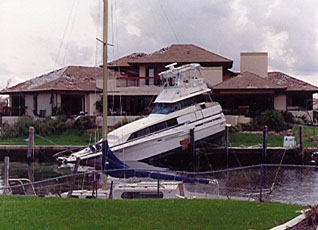
Yep, this is our introductory photo to Bertram Yachts. Not very complimentary? Read on because in the aftermath of hurricanes Andrew and Opal, most Bertrams survived with as little damage as this one did.
Bertram has a well-deserved reputation for building rugged, high quality boats. Bertram has an interesting history, for it was one of the three first production boat companies to start up in 1961 along with Hatteras and the Henry Hinckley Company, all known for producing top quality boats that have survived to this day. Well, almost, for the current status of Bertram seems to be that it is teetering on the edge of extinction.
The success of Bertram came about as the result of Dick Bertram's commitment to quality, Ray Hunts revolutionary deep vee hull design, and the timeliness of Castro's overthrow of the Bastista government which brought a flood of cheap labor to Miami. This was augmented by the fact that the Cuban refugees that got jobs at Bertram usually kept them for a lifetime, meaning that the turnover at Bertram was nearly zilch, meaning that Bertram employees were well trained and knew what they were doing.
More that three decades later, the downfall of Bertram was probably that Bertrams ended up being built by Cubans for Cubans, for the later management made the disastrous mistake of concentrating solely on the sport fishing market by completely abandoning the cruising market. When the '89 recession hit, they ended up being in the wrong niche market, from which this large operation could not recover.
Although Bertram did produce many motor yachts, these were half-hearted efforts that often resulted in poorly performing boats based on a deep vee hull that resulted in extremely inefficient fuel hogs that required too much horsepower to drive. Add to that their marketing feel far short so that Bertram ultimately defaulted the entire extremely lucrative motor yacht business to Hatteras, a factor which insured Hatteras's success.
The reputation of Bertram is built on rough and rugged sport fishermen based on the original Ray Hunt design that produced boats that keep on going when others had to put into port. But the downside of a very deep vee hull is that they are inefficient and require a lot more horsepower, as well as fuel, to drive them. This also resulted in a lower profile hull that significantly limits interior space, a factor which gave Hatteras room to compete in the fish boat market by making beamier boats with bigger and more plush interiors that pleased the ladies. Apparently Hatteras wisely recognized that the lady of the house
Interiors on these boats are often downright spartan. Not for nothing are they often referred to as macho boats, what with all the formica you'll find on any Bertram made before 1990. The good news is that this can easily be changed by covering with veneers, vinyls or fabrics over the mica, which can transform some of these dreary interiors in no time.
This lead to Bertram and Hatteras becoming arch rivals with Hatteras ultimately emerging as the winner. While the Bertram crowd rather arrogantly looked down their noses at the folks in High Point, Hatteras sales soared while Bertrams remained relatively flat. Until the '89 recession when they went to zero from which they never recovered.
While Bertram is often the quality standard by which all others are judged, you may be surprised to hear me say that that reputation is not always well deserved. While I would ascribe some of the industry's best R&D and quality control to Bertram, these boats are not the floating tanks like many people believe. For over two decades Lee Dana was the chief of engineering at Bertram, and from what we've seen of these boats Lee clearly knew where to put the beef and where to take it out. For the fact is that with a deep vee hull, the weight of these boats had to be kept down if you were going to get any kind of speed out of them, and that is a lesson Bertram learned early on. Model for model, you may be surprise to find that Bertrams are lighter than a Hatteras, especially in hull laminate thickness.
Throughout these pages, we've shown you a lot of pictures of boats that have gone through hurricances. After seeing so many of these boats bashed and battered, we know how they're built, and we can tell you that they really are tough cookies. These hull laminates are no thicker, or at least not much thicker, than anybody else's, but it is the engineering expertise - often utterly lacking in so many others - that makes the difference. These hulls are plain old woven roving construction and hold up better than all the exotic materials you hear about put together. When you hear builders touting the latest and greatest high tech stuff, we say HOOEY! And we'll be pleased to show you the proof, because its contained right here on the pages of this web site. That's why, over and over again, we show you pictures of busted up boats. The only way to test 'em is to break 'em, and that's what storms do.
You may have heard that Bertrams don't blister. For the most part, that is true, although there have been a few. As one who has occasionally wandered through the Bertram yard, we know that one of the reasons is quality control. For example, a green dye was usually added to the resin to help show up incomplete wet out. Also, it was Lee Dana himself who told us about tank coating, the process of using a high quality resin on the exterior and lower quality in the later laminations. No doubt the wrong resin occasionally got sprayed at the wrong time.
This is not to say that you'll find many Bertrams falling apart, although that is not without precedent. As the photos on this page shows, we've seen a lot of Bertrams wrecked by hurricanes so we know how they're built. As a rule, these solid fiberglass hulls will outperform any cored hull under any conditions. As with Hatteras, we've seen dozens of Bertrams survive storms that destroyed all their neighbors. If the ability to survive after hitting a coral head or taking a wave over the stern concerns you, these are the kind of boats to consider. Just be aware that, as with all other builders, mistakes are made. As with all builders, occasionally they do some pretty dumb things - like bolting a cleat to a block of wood that is basically glued to the hull, as you will find in the 42C, and as discovered after hurricane Andrew as all the 42's ripped their cleats out.
Both companies wisely stayed away from exotic materials and continued to build from basic roving and balsa cored construction, decisions that spared them any costly mistakes. Well, almost. In fact, both companies experimented with foam cores in the mid 1980's with both efforts resulting in failures, both in their 38' line of sport fishermen. The experiments quickly came to an end and was not tried again.
One of the worst things you'll find about Bertram are the generators placed under the cockpit decks which, up until the early 80's were wood. Needless to say, the decks leaked like crazy and ruined the generators. Battery placement was usually a nightmare, and if you don't maintain the batteries you end up with a lot of dead ones and frequent replacements. Engine room layouts are usually quite a bit less than ideal, usually cramped and hard to maintain. Rarely was consideration given toward maintenance, which no doubt contributes greatly to why so many of these older boats are so poorly maintained.
So what about buying used Bertrams today? Much of the fleet is now finding its way to the back lots of boat yards. Prices are down far enough that people who really can't afford them have bought them, only to find that the upkeep of these aging yachts, particularly the immensely popular but fuel-hoggy 46 Convertible, is a whole lot more than they expected. The small boats, and the more popular 37 and 54 Convertible are still hot items on the market and command steep prices. But probably one of the best values to be had these days is the rugged 42 Convertible which is not so big and heavy that you need monster diesels to make them go. The 33 & 37 are great boats that initially carried high price tags made even higher by the addition of towers and all the bells and whistles. Yet as time goes on, these prices steadily decline, bringing some of these gems within reach of the less-than-rich.
Unless you're got the bucks, beware of buying diesel Bertrams. They are hard on engines and keeping them going gets downright expensive. The best values for the budget conscious are with the gas engine boats. But make sure that your choice isn't underpowered because over-worked gas engines don't last long.
Bertram 26.6 II | Bertram 28 II | Bertram 30 Express | Bertram 30 Moppie | Bertram 31 SF | Bertram 36 Moppie | Bertram 42 Convertible | Bertram 46 Convertible
From featured article: "MARLIN MONROE" Bertram 42 Convertible
Added Jan-29-2009
From Core and Structural Issues: "Bad
News for Bertram" (2008 Bertram 63 Hull Failure
- Hull Delamination)
 Visit davidpascoe.com for his power boat books
Visit davidpascoe.com for his power boat books 


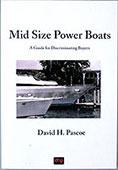







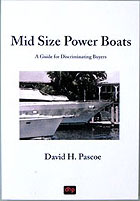
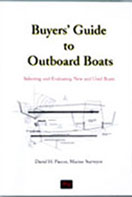

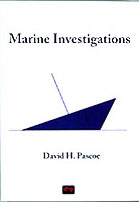
David Pascoe is a second generation marine surveyor in his family who began his surveying career at age 16 as an apprentice in 1965 as the era of wooden boats was drawing to a close.
Certified by the National Association of Marine Surveyors in 1972, he has conducted over 5,000 pre purchase surveys in addition to having conducted hundreds of boating accident investigations, including fires, sinkings, hull failures and machinery failure analysis.
Over forty years of knowledge and experience are brought to bear in following books. David Pascoe is the author of:
In addition to readers in the United States, boaters and boat industry professionals worldwide from nearly 80 countries have purchased David Pascoe's books, since introduction of his first book in 2001.
In 2012, David Pascoe has retired from marine surveying business at age 65.
On November 23rd, 2018, David Pascoe has passed away at age 71.
Biography - Long version